
|
Rescooped by
Catherine Smyth
from Teaching history with ICT
onto Primary history November 16, 2015 10:36 PM
|
Get Started for FREE
Sign up with Facebook Sign up with X
I don't have a Facebook or a X account


|
Primary history
Connecting with the past. Research-based, practical ideas for teaching and learning history in the primary classroom. This topic is strongly aligned to the Australian Curriculum: history. Curated by Catherine Smyth |
 Your new post is loading...
Your new post is loading...

|
Rescooped by
Catherine Smyth
from HSIE K-6
June 28, 2012 1:17 AM
|
Decades of educational and cognitive research has found that there are 3 fundamental principles of learning. These 3 principles should underpin the approach we take in teaching history in the primary classroom:
1. Students come to the classroom with preconceptions about how the world works. We need to engage primary students' initial understanding.
2. To develop competence in historical inquiry, students must a) have a deep foundation of factual knowledge; b) understand facts and ideas in the context of a conceptual framework, and c) organise knowledge in ways that facilitate retrieval and application.
3. A metacognitive (reflective) approach helps students learn to take control and monitor their learning
This book builds on this research and explores how these principles can be applied in teaching history in the primary classroom.
I highly recommend this book.
In my opinion this book can be a helpful as it can help me build my knowledge in the area of history. With knowledge comes power; if i feel confident enough with the subject i will be more comfortable with teaching it to my future students. As a student It would be a beneficial resource as it links to other principles such as the 3 fundamental that are mentioned. Knowing how childern acknowledge and learn the concept of 'history' is quite interesting.
As soon as I saw this I knew I'd found my last scoop. These simple three steps will help me greatly when teaching Humanities. Going even further, the book 'How Students Learn' is also very useful as it provides an overview of the best ways to teach history in the classroom. Obviously one of the most important things when teaching is teaching with understanding, and that has been emphasised in all three steps. I think I'd use this frequently in my teaching because by having these steps I would be able to keep focused on the end result (gives me continual guidance). I also know it's from a reliable resource - Catherine Smyth being an experienced primary educator herself.

|
Scooped by
Catherine Smyth
May 10, 2020 9:33 PM
|
Primary sources are the building blocks of history, for researchers and students, and providing access to them is pivotal to our attempts to develop our students as researchers and their skills thr…
The case-studies on this 'makingdigitalhistory' website have relevant ideas that can be adapted for teaching history and geography in the primary classroom.

|
Rescooped by
Catherine Smyth
from Australian Colonies - Looking into the connections between people in the 1800s
June 25, 2019 8:52 PM
|


|
Scooped by
Catherine Smyth
May 21, 2018 10:53 PM
|
Hear the poignant personal stories behind battlefield grave markers in Egypt, France and Gallipoli, as well as the stories behind workplace honour rolls, one of the most common, but often hidden, forms of war memorial in Australia.
Learn more about this website.
In the Stage 2 topic, 'Community and Remembrance' students identify commemorations of significance in Australia and the world. This site has a range of photographs of War memorials and honour rolls.
Teaching ideas:
- Provide students with the opportunity to OBSERVE + REFLECT + QUESTION
- Pose a range of questions about the memorials (e.g. who, where, why, when, how...)
- Locate information to answer the questions using the primary sources (e.g. honour roll)
- Explore CONCEPTS such as commemoration, significance, honour, service, sacrifice
- Find out the stories behind the names
- Explore different forms of war memorial in Australia
- Find out about a person on the honour roll and construct a historical narrative about them in digital story form
- Take digital photos of war memorials in the local community
- Develop historical literacy skills- 'unpack' key terms and vocabulary on the war memorial.
- Think about the purpose of a war memorial
- Identify key dates on the memorial. What was life like then?

|
Scooped by
Catherine Smyth
December 6, 2016 8:08 PM
|
What is an historian? How do historians think?

|
Scooped by
Catherine Smyth
June 7, 2016 1:12 AM
|
Naji, one of our Songlines on Screen, tells a story from the Bugarregarre time, the Dreamtime. These stories show Aboriginal people's ongoing connection to land and culture as told throughout time by the way of creation songs.

|
Scooped by
Catherine Smyth
May 31, 2016 10:18 PM
|
Sydney’s self-guided historical walks include the city centre, Kings Cross, Newtown and Ultimo as well as major thoroughfares such as George Street, Pitt Street and Oxford Street.

|
Scooped by
Catherine Smyth
May 13, 2016 1:10 AM
|
What does literacy look like in primary history?
Historical literacy implies that what students learn is HISTORY, not something else (Lee, 2011). An historical literacy lesson is not an English lesson with some history embedded. It involves planning activities where students engage with the specialised processes in the discipline. In history, these processes involve sourcing, generating an hypothesis and justifying a claim.
Use backward design principles to plan historical literacy lessons. Start by identifying learning goals such as:
- reading and understanding different texts
- understanding and using specific historical language
- analysing and using sources and historic texts
- researching and communicating in oral, written and digital forms (BOSTES History K-6 syllabus, page 28).

|
Scooped by
Catherine Smyth
May 8, 2016 8:27 PM
|


|
Scooped by
Catherine Smyth
April 18, 2016 10:33 PM
|
Let's find out exactly what happened on the beaches of Gallipoli way back in 1915. Here’s Matt.

|
Scooped by
Catherine Smyth
March 13, 2016 9:21 PM
|
Putting massive amounts of time in perspective is incredibly hard for humans, so we made this graphic.

|
Rescooped by
Catherine Smyth
from Teaching history with ICT
February 28, 2016 5:37 PM
|
History in Motion makes it easy to create, share, and explore animated
historical maps and scenarios.

This technology is a useful tool to help primary students make connections to past events and places. Create historical scenarios, animate events and communicate using History in Motion.


|
Rescooped by
Catherine Smyth
from Teaching history with ICT
November 16, 2015 10:36 PM
|

While timelines play a vital role in organising and representing historical time, primary aged children make sense of a timeline if they can make connections to their prior knowledge.
Design learning activities that involve making comparisons between then and now. Start with making connections with the material or social aspects of life (e.g. school, clothes, toys, transport) in the past.
According to Levstik and Barton (2005), understanding historical time involves:
- being able to order moments in time
- being able to match moments in time to specific dates
Research shows that children are better at sequencing historical periods (e.g. convict era, colonial Australia) than assigning dates or names to those periods. Dates often don't allow students to visualise
the time being referred to. As such, teachers can facilitate learning by helping students visualise images of history with the corresponding dates. Help students make distinctions between broad categories of time (close to now, a long time ago, in the 1800s etc).


|
Rescooped by
Catherine Smyth
from iPads, MakerEd and More in Education
November 15, 2015 5:56 PM
|
While the introduction of FabLabs and makerspaces into schools tends to focus on the importance of hands-on projects in the STEM or STEAM fields, it's just as important that students engage in maker projects in their humanities and social science classes. History teachers should bring making into the classroom, even at schools that don't have formal makerspaces.
Via John Evans

|
Scooped by
Catherine Smyth
October 1, 2015 12:31 AM
|
Adaptable templates for developing historical thinking in primary classrooms.

|
Scooped by
Catherine Smyth
March 23, 2015 7:38 PM
|
Planning historical inquiry in the primary classroom
To help young children develop an understanding of the past, teachers can design a historical inquiry around topics that are relevant to their students (e.g. school, family, toys)
Teaching ideas:
- Use an inquiry approach and pose questions to stimulate prior knowledge and ideas e.g. What was school like in the olden days?
- Use primary sources e.g. Watch original film footage or observe historical images or documents
- Decode visual sources- e.g. children can take turns to describe what they can see in a picture. Ask students to identify particular aspects, label different features, write a caption
- Ask questions to give an overview of the image- what people can you see? where are they? what are they doing? who do you think they are? why? Are there any letters, words, numbers?
- Ask questions to elicit details about the visual source such as- what are they wearing? what are they holding? what sorts of clothes are they wearing? what sorts of hairstyles? what sorts of foods/games/classrooms? What are they doing in the picture? What does the picture tell us about women, race, children, age etc;
- Analyse primary sources- e.g. compare similarities and differences with school today. Imagine what school will be like in the future.
- Provide graphic organisers which allow students to organise their knowledge and ideas. E.g. 'T Chart" (before and now), Venn Diagram (similarities and differences).
- Address historical concepts e.g. change and continuity, cause and effect, chronology.
- Teach and use different types of historical language (e.g. language of historical time- 1940s, decade, long ago, in the olden days OR the language of historical processes such as similarity, difference).
- Talk about historians use primary sources to find out about the past
- Construct an historical narrative about what school was like in the past
- Think about what school will be like in the future
For further reading:
Cooper, H.(2002). History in the early years.
Husbands, C. (1996). What is history teaching?

|
Rescooped by
Catherine Smyth
from HSIE K-6
March 23, 2015 7:00 PM
|
As you saw earlier, Anzac day commemorations were held on Friday. And on that day we were lucky enough to meet a young Aussie with a very special connection to it. His name is Anzac. Here's his story. But first, a warning to Aboriginal and Torres Strait Islander viewers, this story contains images of people who've died.
Via Catherine Smyth
Personal stories help young children learn about the past. Use historical narratives in the classroom to humanise significant events like war.
In the book "What is History Teaching?, Chris Husbands describes how 'Storied thinking' is a central tool in the teaching and learning of history. Husbands suggests the teacher's role is to:
- Provide information
- Tell stories
- provide historical context
- interpret
- organise resources and students
- ask questions (ascertain prior knowledge and ideas)
- perform
- pose problems (what if? how about? what do you think?)

Personal stories help young children learn about the past. Use historical narratives in the classroom to humanise significant events like war.
In the book "What is History Teaching?, Chris Husbands describes how 'Storied thinking' is a central tool in the teaching and learning of history. Husbands suggests the teacher's role is to:
- Provide information
- Tell stories
- provide historical context
- interpret
- organise resources and students
- ask questions (ascertain prior knowledge and ideas)
- perform
- pose problems (what if? how about? what do you think?)

Personal stories help young children learn about the past. Use historical narratives in the classroom to humanise historic events like war.
In the book "What is History Teaching?, Chris Husbands describes how 'Storied thinking' is a central tool in the teaching and learning of history. Husbands suggests the teacher's role is to:
- Provide information
- Tell stories
- provide historical context
- interpret
- organise resources and students
- ask questions (ascertain prior knowledge and ideas)
- perform
- pose problems (what if? how about? what do you think?)

|
Rescooped by
Catherine Smyth
from iGeneration - 21st Century Education (Pedagogy & Digital Innovation)
September 14, 2015 7:47 PM
|
History just keeps happening – there's nothing you can do about that. But learning as much as possible is deeply rewarding, and helps you better understand the world. This week Cool Websites and Apps digs into five sites that give you a better idea of history. Explore maps from other ages, see where people are…
Via Tom D'Amico (@TDOttawa)

5 Utterly Fascinating History Education Resources

The map showing different periods in history is really useful...


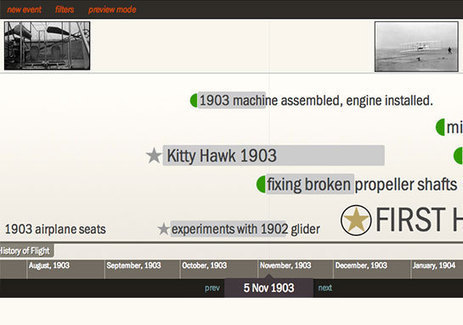




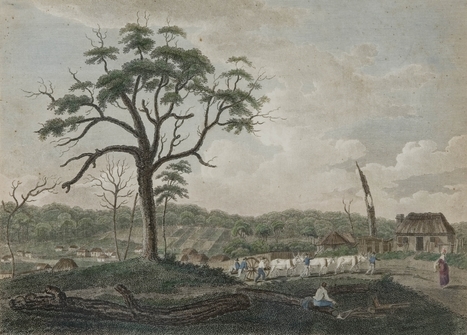

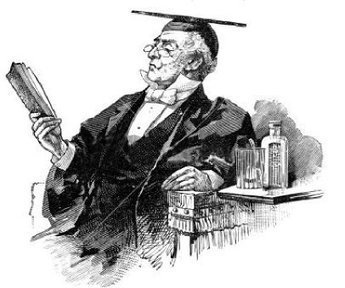

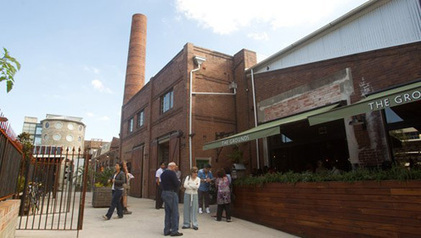
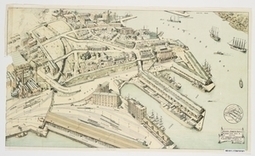
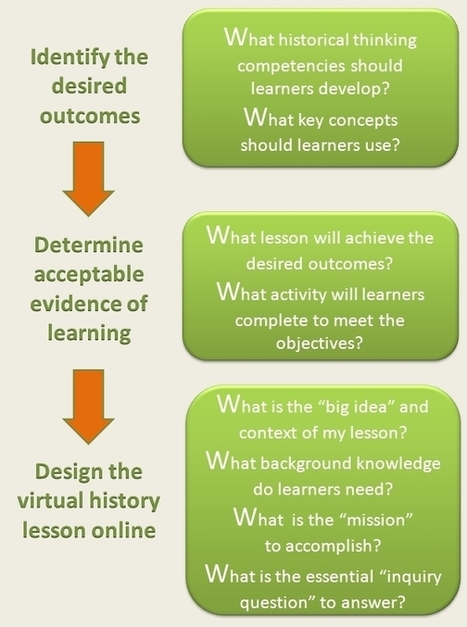

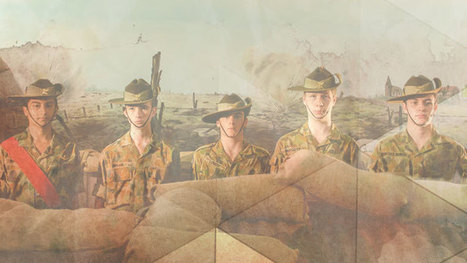
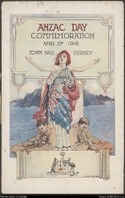

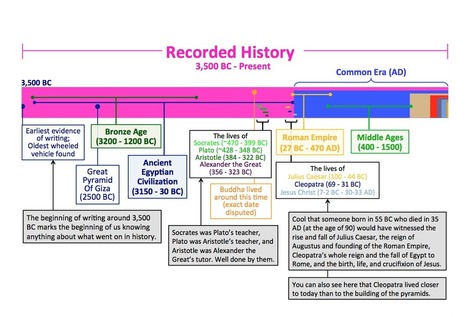
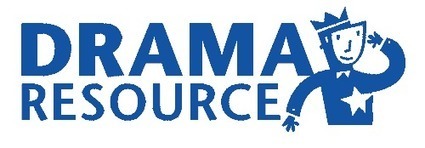
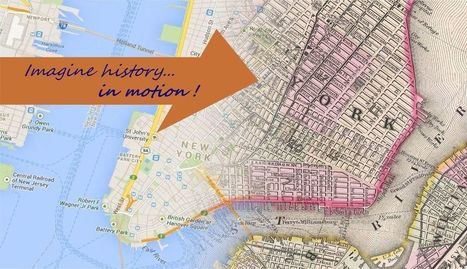


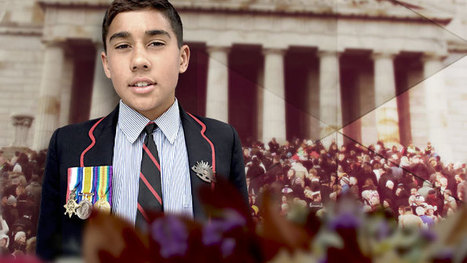






While timelines play a vital role in organising and representing historical time, primary aged children make sense of a timeline if they can make connections to their prior knowledge.
Design learning activities that involve making comparisons between then and now. Start with making connections with the material or social aspects of life (e.g. school, clothes, toys, transport) in the past.
According to Levstik and Barton (2005), understanding historical time involves:
Research shows that children are better at sequencing historical periods (e.g. convict era, colonial Australia) than assigning dates or names to those periods. Dates often don't allow students to visualise
the time being referred to. As such, teachers can facilitate learning by helping students visualise images of history with the corresponding dates. Help students make distinctions between broad categories of time (close to now, a long time ago, in the 1800s etc).